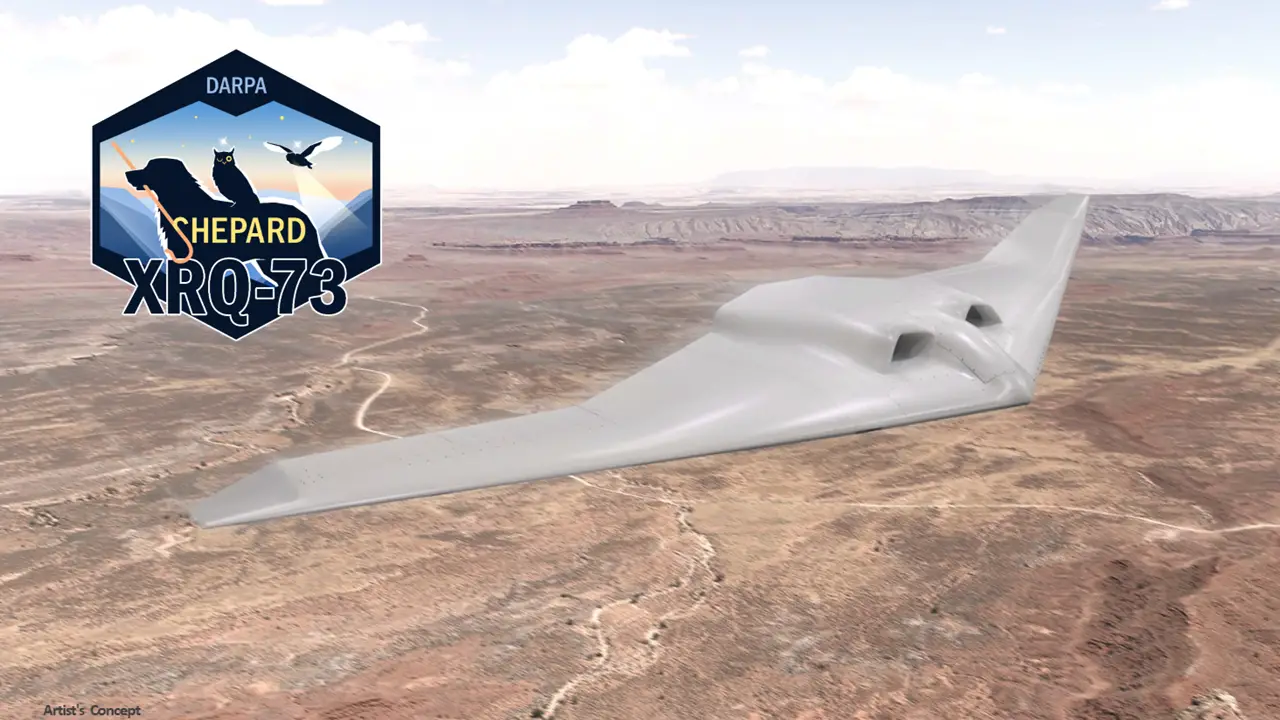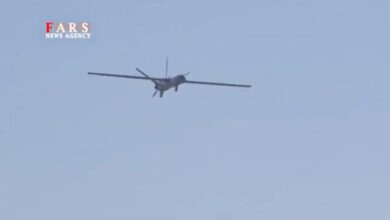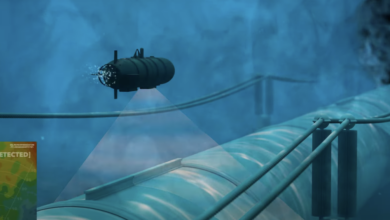The US Defence Advanced Research Projects Agency (DARPA) has unveiled a flying-wing drone project featuring hybrid electric propulsion that converts fuel to electricity.
Being developed under the four-year-old Series Hybrid Electric Propulsion AiRcraft Demonstration (SHEPARD) program, the XRQ-73’s maiden flight is expected by the end of this year.
It will be a “rapidly fieldable” Group 3 drone weighing around 1,250 pounds (567 kilograms).
Group 3 drones fly at an altitude of under 18,000 feet (5,486 meters) and between 100 and 250 knots (185 to 463 kilometers/115 to 288 miles per hour).
Program’s Prime Contractor: Northrop Grumman
“The idea behind a DARPA X-prime program is to take emerging technologies and burn down system-level integration risks to quickly mature a new missionized long endurance aircraft design that can be fielded quickly,” SHEPARD program manager Steve Komadina said.
“The SHEPARD program is maturing a specific propulsion architecture and power class as an exemplar of potential benefits for the Department of Defense.”
Northrop Grumman is the program’s prime contractor, with suppliers including Scaled Composites, Cornerstone Research Group, Brayton Energy, PC Krause and Associates, and EaglePicher Technologies.
The DARPA team includes members from the Air Force Research Laboratory (AFRL) and the Office of Naval Research.
Leverages Previous Project
The SHEPARD program leverages hybrid technologies and other components from the earlier Great Horned Owl (GHO) project run by the AFRL/Intelligence Advanced Research Projects Activity.
The GHO program was launched in 2011 and designated as the XRQ-72.
It sought to develop a reconnaissance drone with a blend of low acoustic signature and greater payload and endurance capabilities.
To achieve quietness, it was intended to have electric propulsion, wherein electricity is generated from liquid hydrocarbon fuel (gasoline or diesel).
“The specific propulsion subsystems that GHO’s Phase 1 will focus on are: (1) fuel-to-electricity devices using an advanced combustion engine directly coupled to alternator/generator concepts and (2) electricity-to-thrust devices utilizing innovative electric motor driven propulsor systems,” the Intelligence Advanced Research Projects Activity explained.
Flying Wing Design
The GHO drone did not have a stealthy design as it used “upper-surface propulsors,” according to Air and Space Force Magazine.
The XRQ-73, however, features a flying wing design with “engines buried in the planform, clearly intended to have radar low observability in addition to noise reduction,” the outlet added.
Moreover, the hybrid electric approach seems to significantly enhance the drone’s endurance and payload capabilities.












